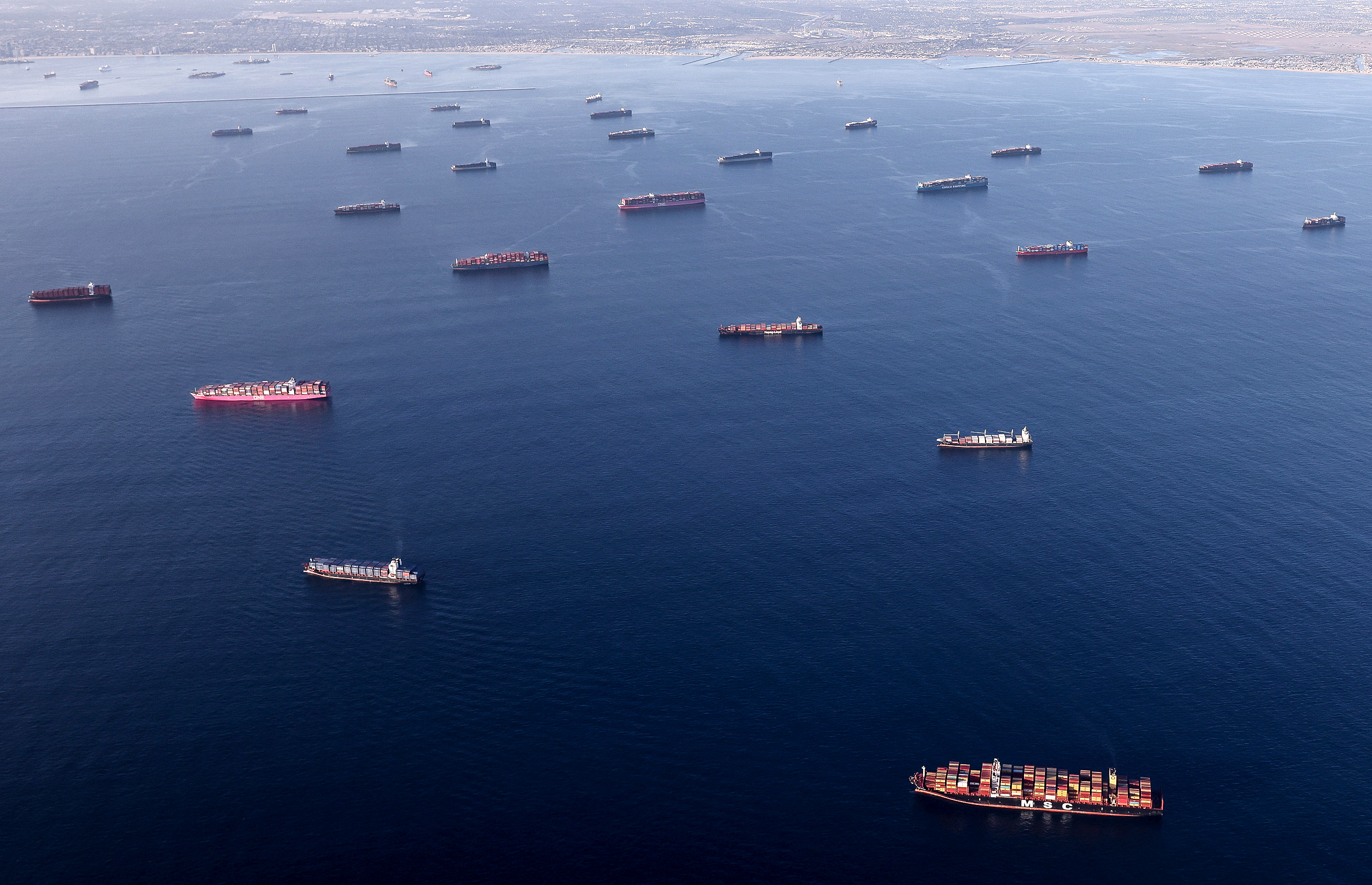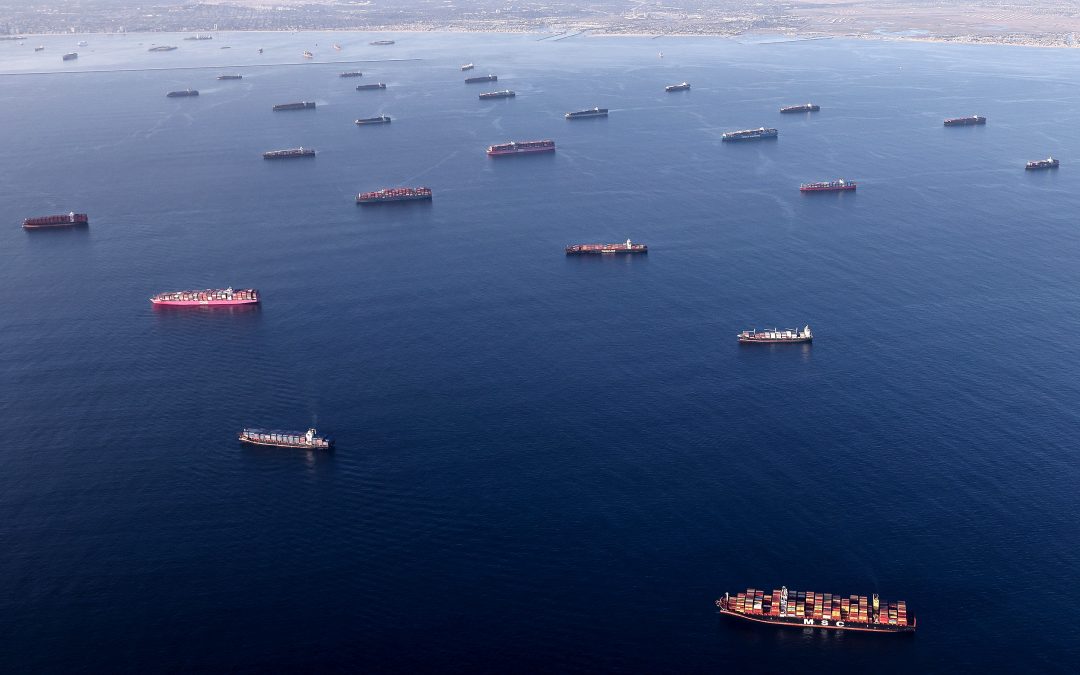
Introduction
As the sun sets on the horizon, casting a warm golden hue over the tranquil waters, a surreal and unsettling sight unfolds just beyond the reach of the coastline. Offshore, a fleet of massive cargo ships, fully loaded with goods from around the world, stands idle and motionless. This eerie scene has become an unexpected symbol of the times we live in. In 2023, a convergence of global events has led to a unique phenomenon – full cargo ships lingering offshore, waiting for a future that remains uncertain.
The Perfect Storm of Factors
Several factors have contributed to this unusual occurrence of cargo ships idling offshore in 2023. Let’s delve into the key elements that have created this unprecedented situation.
- Global Supply Chain Disruptions: The COVID-19 pandemic, which wreaked havoc on the global supply chain, continues to cast its long shadow. While some nations have managed to control the spread of the virus and resume operations, others still grapple with restrictions, lockdowns, and workforce shortages. These disruptions have led to imbalances in supply and demand, causing cargo ships to wait for berths to unload or load their valuable freight.
- Labor Shortages: A shortage of skilled labor in various industries, including maritime, has been exacerbated by the pandemic. Quarantine measures, travel restrictions, and health concerns have made it challenging for crew members to embark and disembark from ships, leading to delays in operations and crew changes. This, in turn, affects the efficiency of cargo handling.
- Port Congestion: Many ports around the world are grappling with severe congestion due to the aforementioned supply chain disruptions. Containers are piling up on docks, and ships are forced to wait in long queues before they can access the port. As a result, cargo ships spend precious time anchored offshore, adding to the idling phenomenon.
- Trade Imbalances: Global trade imbalances, exacerbated by economic and political factors, have contributed to the conundrum. Some ships are sailing with full cargoes to destinations where demand has plummeted, leaving them stranded with no viable options for unloading.
- Environmental Regulations: Stricter environmental regulations have prompted some ships to reduce their speeds, leading to longer voyage times and increased congestion at ports. While these regulations are essential for reducing the shipping industry’s carbon footprint, they have also inadvertently contributed to the accumulation of idle cargo ships offshore.
The Human and Economic Impact
The sight of full cargo ships idling offshore in 2023 is not just a haunting visual; it also reflects the broader human and economic challenges we face. The prolonged idleness of these ships has ripple effects that extend beyond the maritime industry.
- Economic Losses: The financial toll of idle cargo ships is significant. Shipping companies bear the burden of maintenance costs, crew salaries, and fuel expenses while their vessels remain stranded. Meanwhile, businesses eagerly await shipments of raw materials and finished goods, facing disruptions that can lead to production delays, higher costs, and even supply shortages.
- Environmental Concerns: Idling ships consume fuel and emit greenhouse gases, contributing to environmental degradation. Additionally, the risk of accidents, such as oil spills or collisions, increases as ships remain stationary for extended periods.
- Geopolitical Implications: The idling of cargo ships can strain diplomatic relations between countries, especially when goods are delayed or denied entry due to port congestion or other issues. This can lead to trade tensions and further disrupt global commerce.
Looking Ahead: Navigating Uncharted Waters
As we contemplate the sight of full cargo ships idling offshore in 2023, it’s clear that a multifaceted approach is needed to address the challenges at hand. Collaborative efforts between governments, shipping companies, port authorities, and international organizations are essential to untangle this complex web of issues.
- Investing in Infrastructure: Improving and expanding port infrastructure is crucial to alleviate congestion and facilitate smoother cargo handling. Upgrading technology and optimizing operations can help reduce wait times and increase efficiency.
- Streamlining Crew Changes: Coordinated efforts to facilitate crew changes, including vaccination campaigns for seafarers, can help address labor shortages and ensure the smooth operation of ships.
- Enhancing Trade Cooperation: Diplomatic efforts to promote cooperation and open communication between nations can help prevent trade disputes and ease tensions arising from delayed shipments.
- Sustainable Practices: The maritime industry must continue its transition toward more sustainable practices. While environmental regulations play a role, technological innovations, such as alternative fuels and streamlined route planning, can contribute to reducing emissions and minimizing idling time.
Conclusion
The image of full cargo ships idling offshore in 2023 serves as a stark reminder of the interconnectedness of our world and the delicate balance that sustains global trade. The challenges posed by this phenomenon are a call to action for all stakeholders to work together, adapt, and innovate in the face of uncertainty. By addressing the root causes of the issue and embracing sustainable practices, we can navigate these uncharted waters and set a course toward a more resilient and efficient global supply chain.


0 Comments